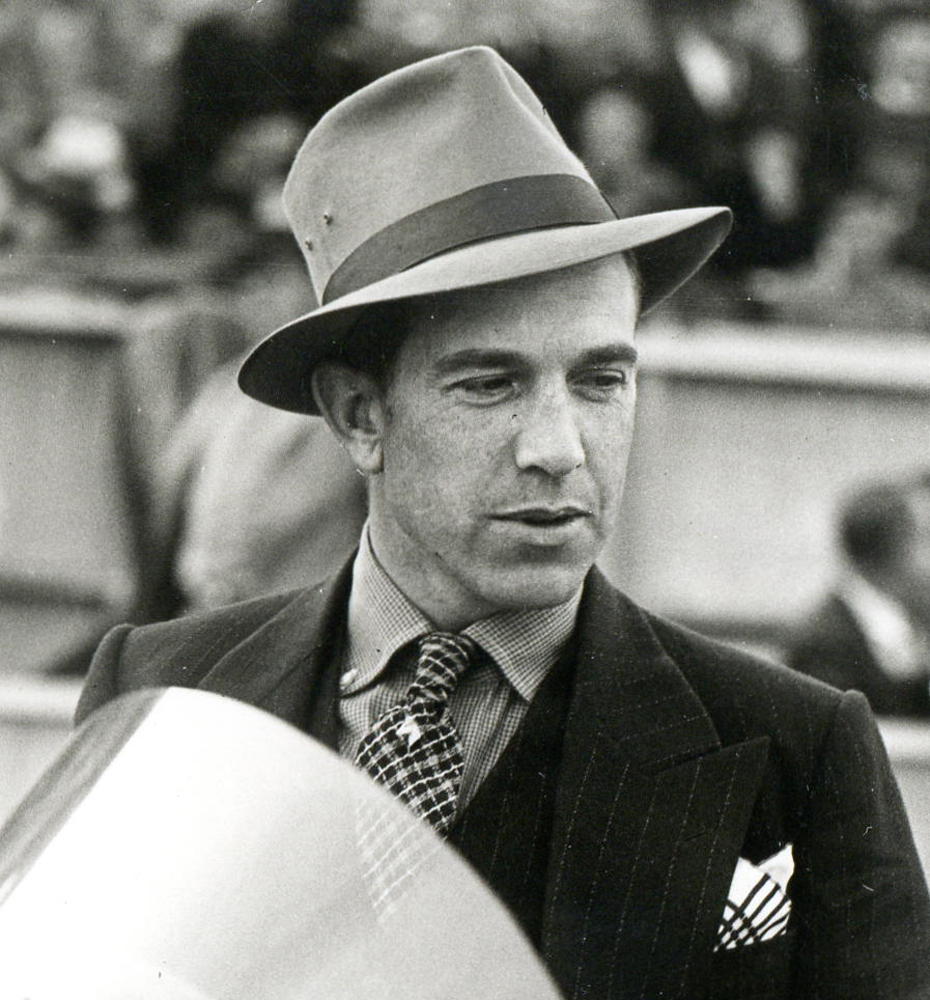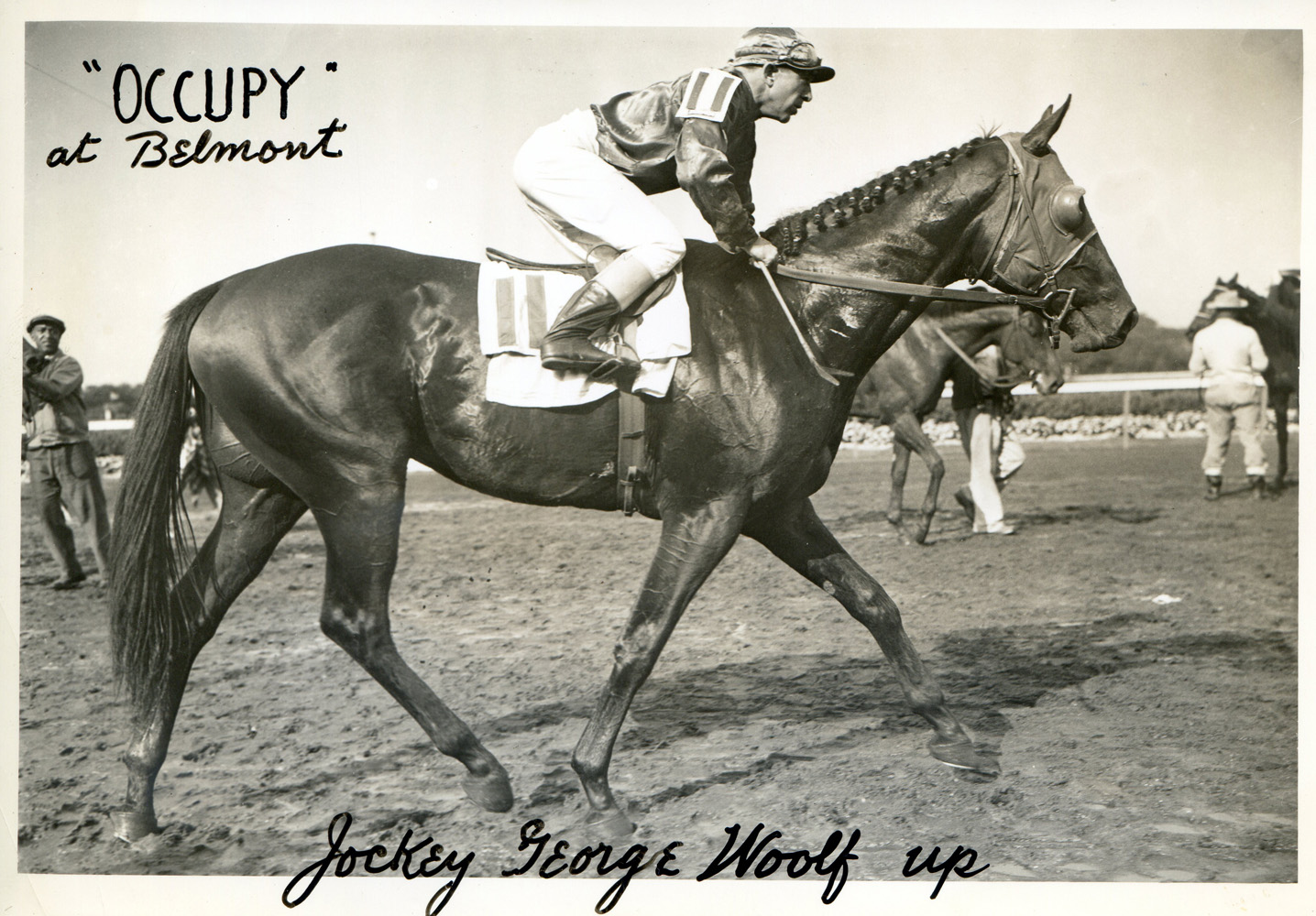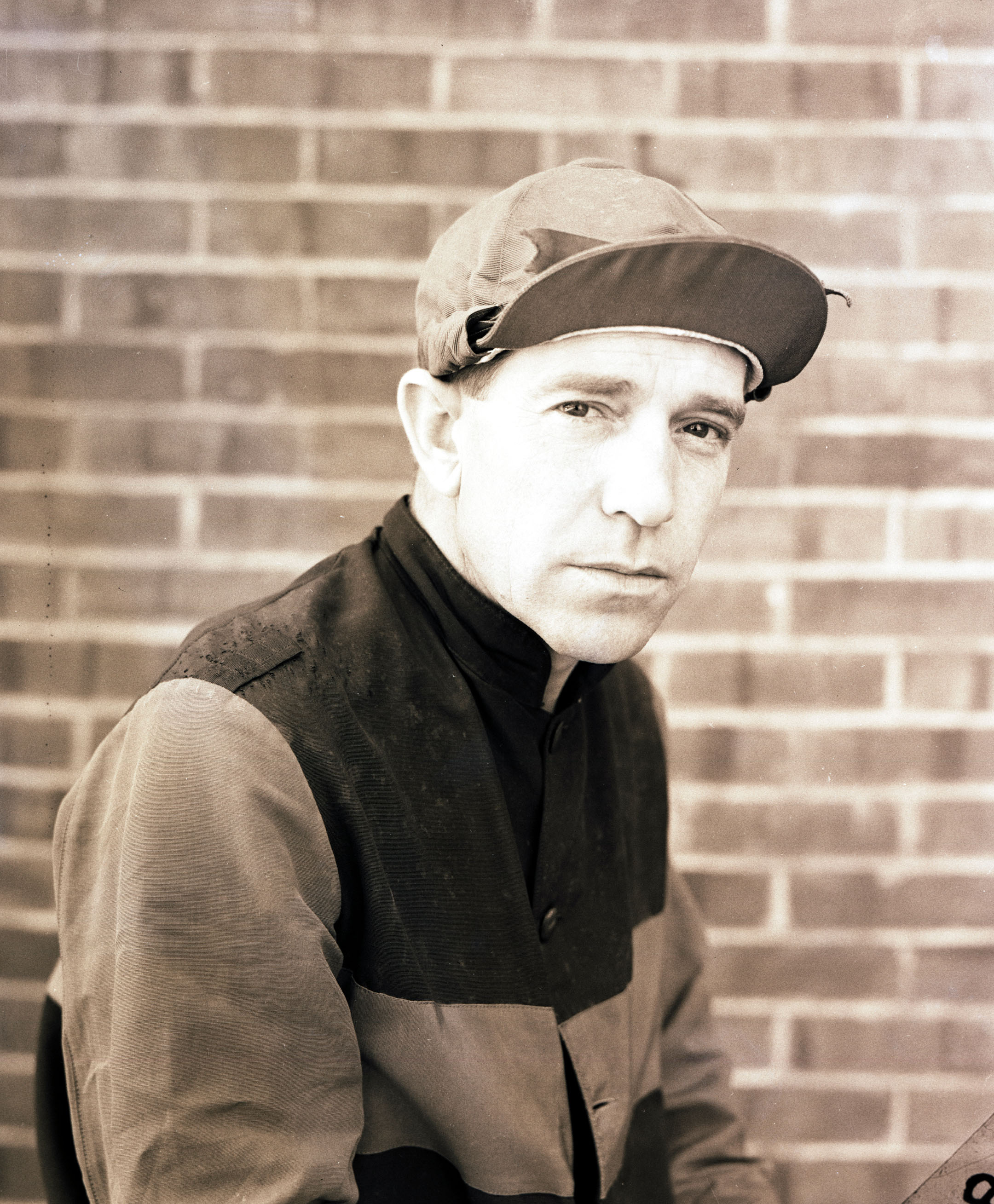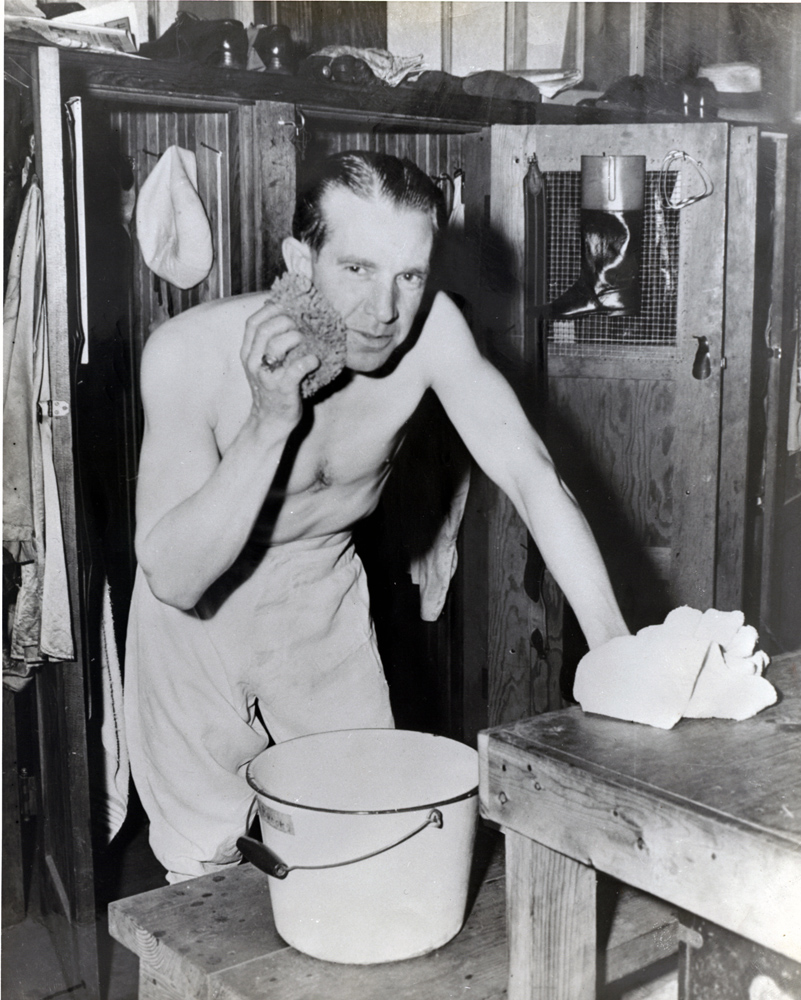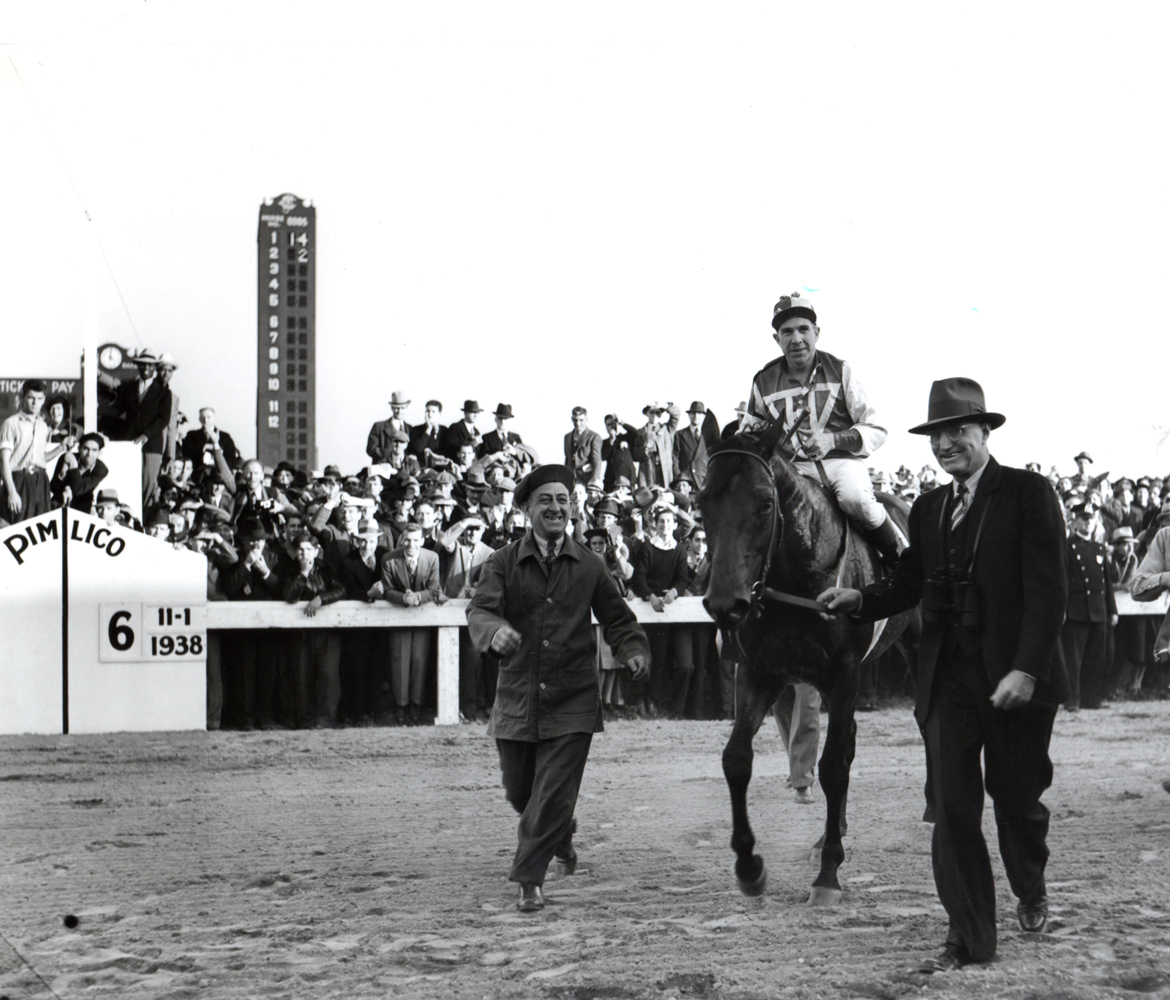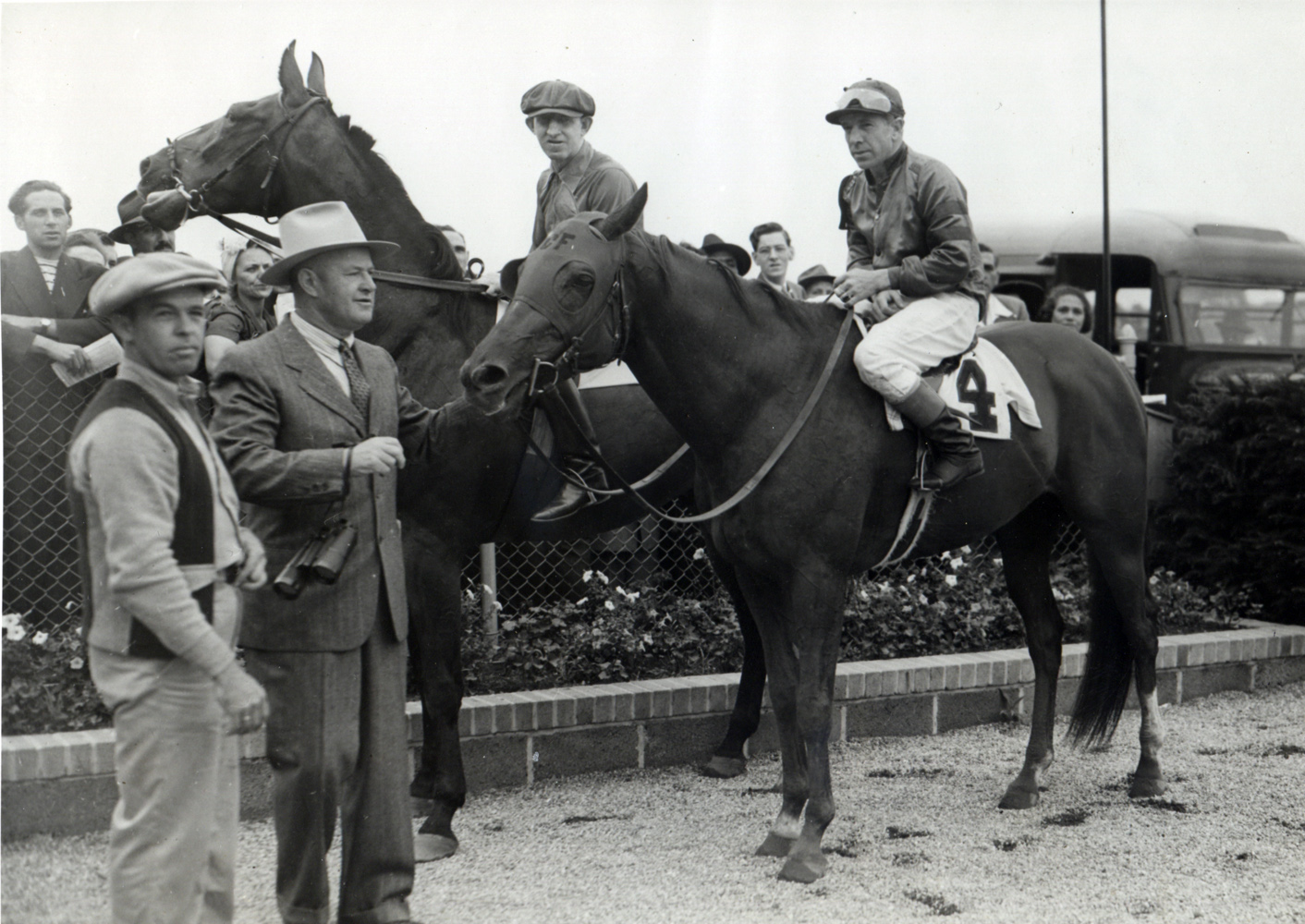George M. Woolf
Thoroughbred racing’s first $100,000 contest, the inaugural Santa Anita Handicap, took place on Feb. 23, 1935. The field included some of the finest horses of the era, including all-time greats Equipoise and Twenty Grand. One of the longshots in the race was Azucar, a converted steeplechaser overlooked at odds of 12-1, but with George “The Iceman” Woolf in the irons he shouldn’t have been totally dismissed.

1955
May 31, 1910, Cardston, Alberta, Canada
Jan. 4, 1946, Arcadia, California
1928-1946
721
Biography
Thoroughbred racing’s first $100,000 contest, the inaugural Santa Anita Handicap, took place on Feb. 23, 1935. The field included some of the finest horses of the era, including all-time greats Equipoise and Twenty Grand. One of the longshots in the race was Azucar, a converted steeplechaser overlooked at odds of 12-1, but with George “The Iceman” Woolf in the irons he shouldn’t have been totally dismissed.
Woolf, 24 years old at the time, was beginning to earn a reputation as one of the top jockeys in the country. With a value of $108,400 to the winner, the first Santa Anita Handicap cemented Woolf’s status as one of the best in his profession. Taken back by Woolf as many as 15 lengths, Azucar was “splendidly ridden” according to The BloodHorse. He steadily made up ground in a methodical manner, slipped past the field along the rail, took the lead in the stretch and won easily by two lengths. Azucar and Woolf set a new track record in the process, 2:02⅕ for 1¼ miles. The result was typical Woolf — calm, cool, and collected.
Born on a Canadian ranch in southwest Alberta on May 31, 1910, Woolf was always around horses while growing up. His father, Frank, was an accomplished rodeo rider, while his mother, Rosina, was a trick rider in the circus. By the time he was a teenager, George Woolf began to demonstrate he was at home in a saddle. Like his father, Woolf gravitated toward rodeo competitions and he displayed rare balance and poise under duress. By the time he was 18, Woolf was riding thoroughbreds professionally in Vancouver. He soon moved his tack to Tijuana, Mexico, before eventually settling in at Santa Anita.
Woolf was quickly recognized as a phenom and tagged with the nickname “The Iceman” because of his cool demeanor and ability to “sit chilly” during races. While establishing himself as one of America's leading jockeys, Woolf was diagnosed with what is now known as type 1 diabetes. Only a few years earlier, before the discovery of insulin, such a diagnosis would have been fatal. Because of his condition, and the nature of diabetes management in the 1930s and 1940s, Woolf had to regulate his weight to avoid rapid dieting. His success in stakes races afforded him the opportunity to accept only a few rides each week. In an era when it was not uncommon for jockeys to compete in 1,000 or more races per year, Woolf usually accepted between 150 and 200 mounts because of his condition.
Despite his diagnosis, Woolf’s services were in great demand, especially in the biggest races. He won the first three editions of the Hollywood Gold Cup aboard Seabiscuit (1938) and Challedon (1939, 1940) and rode those same immortals to win three straight editions of the Havre de Grace Handicap (Seabiscuit in 1938 and Challedon in 1939 and 1940). Woolf won the Belmont Futurity three consecutive times with Occupation (1942), Occupy (1943), and Pavot (1944). During those same years, Woolf swept the American Futurity at Washington Park with Alsab (1942), Askmenow (1943), and By Jimminy (1944).
Woolf always said that Seabiscuit was the best horse he ever rode. Along with the Hollywood Gold Cup and Havre de Grace Handicap, Woolf piloted Seabiscuit to victories in the Bay Meadows Handicap and a thrilling win against Ligaroti by a nose in a match race at Del Mar. Their most famous victory together, of course, was the 1938 Pimlico Special.
Talk of a showdown between Seabiscuit and 1937 Triple Crown winner War Admiral had dominated headlines for several months when they finally met in the Pimlico Special on Nov. 1, 1938. Trains came to Baltimore from throughout the country for the race. A crowd of 40,000 jammed the track and 40 million more listened to the radio call. War Admiral was the favorite (1-4 with most bookmakers) and a nearly unanimous selection of the turf writers of the day.
War Admiral’s early speed was well known, while Seabiscuit traditionally stalked the pace before pulling ahead with late acceleration. From the walk-up start, few gave Seabiscuit a chance to lead War Admiral into the first turn. Woolf, however, went against the expected script on instructions from Seabiscuit’s trainer, Tom Smith. In his training leading up to the race, Seabiscuit was conditioned to run against his typical style with the intent of going after the early lead against War Admiral.
When the bell rang, Seabiscuit broke in front and had a surprising lead of more than a length before crossing over to the rail. The tactics were shocking, especially considering Woolf sat well off the pace numerous times aboard Seabiscuit, including a victory in the Hollywood Gold Cup that year in which they rallied from 14 lengths back to win.
Halfway down the backstretch, War Admiral started to cut into the lead, gradually pulling even with Seabiscuit, then slightly ahead. Following advice he had received from jockey Red Pollard, who had ridden Seabiscuit in numerous races, Woolf eased up on Seabiscuit, allowing his horse to see his rival, then asked for more effort. As the two legendary horses came into the stretch, Woolf asked Seabiscuit for his best and he pulled away to win by four lengths in one of the most thrilling races of the 20th century. Woolf came back to win the Pimlico Special in 1940 with Challedon and in 1942 with Whirlaway.
Woolf’s only victory in the Triple Crown series came aboard Bold Venture in the 1936 Preakness, defeating Granville by a nose. Some of his other major wins included the Santa Anita Derby, Hollywood Derby, Jockey Club Gold Cup, Whitney Handicap, Brooklyn Handicap, Metropolitan Handicap, Coaching Club American Oaks, Saratoga Special, Hopeful Stakes, and Arlington Handicap, among others.
In the prime of his career, Woolf was riding some of the best horses in America. Seabiscuit, Challedon, Alsab, Whirlaway and Devil Diver were all eventually elected to the Hall of Fame and others such as Bold Venture, Kayak II, Pavot, Top Row, Askmenow, and Pompoon were among the best of their time.
There are conflicting accounts of what took place during the fourth race at Santa Anita on Jan. 3, 1946. What is known for certain is that Woolf fell from a horse named Please Me. Some accounts claim Please Me clipped heels with another horse and tossed Woolf, while other versions state Woolf passed out, possibly because of insulin shock, during the race and dropped from his mount. Regardless of the cause, Woolf’s head struck the inner rail and his brain hemorrhaged. He never regained consciousness and died the following morning at the age of 35.
Following Woolf’s death, the Los Angeles Times described him as “the greatest stakes rider of the past decade” and noted that at Santa Anita “every man and woman in the vast racetrack plant, a small city to itself, mourned his passing. In the tradition of the sport, racing will continue at Santa Anita as scheduled. Mrs. Genevieve Woolf, the widow, expressed the opinion to friends that George would have liked it that way. Taps were sounded after the second race. Riders in the race lined up at the finish line and joined with other jockeys and 24,000 spectators in a brief memorial ceremony that choked every throat and brought tears to every eye in the crowd.”
Woolf won 721 races in his abbreviated career and ranked among the annual earnings leaders several times even though he rode considerably less races than many of the other top jockeys. Woolf was among the first class of inductees to the National Museum of Racing and Hall of Fame in 1955. The George Woolf Memorial Jockey Award was initiated in 1950 and is presented annually to “a rider whose career has earned the respect and esteem for not only himself but for the sport of thoroughbred racing.”
Achievements
Triple Crown Highlights
Won the 1936 Preakness Stakes — Bold Venture
Other Highlights
Won the Pimlico Special — 1938, 1940, 1942
Won the Hollywood Gold Cup — 1938, 1939, 1940
Won the Havre de Grace Handicap — 1938, 1939, 1940
Won the American Derby — 1942, 1943, 1944
Won the Futurity Stakes — 1942, 1943, 1944
Won the Bay Meadows Handicap — 1937, 1938
Won the San Gabriel Handicap — 1937, 1938
Won the Lawrence Realization Stakes — 1942, 1944
Won the Saratoga Special — 1942, 1944
Media
